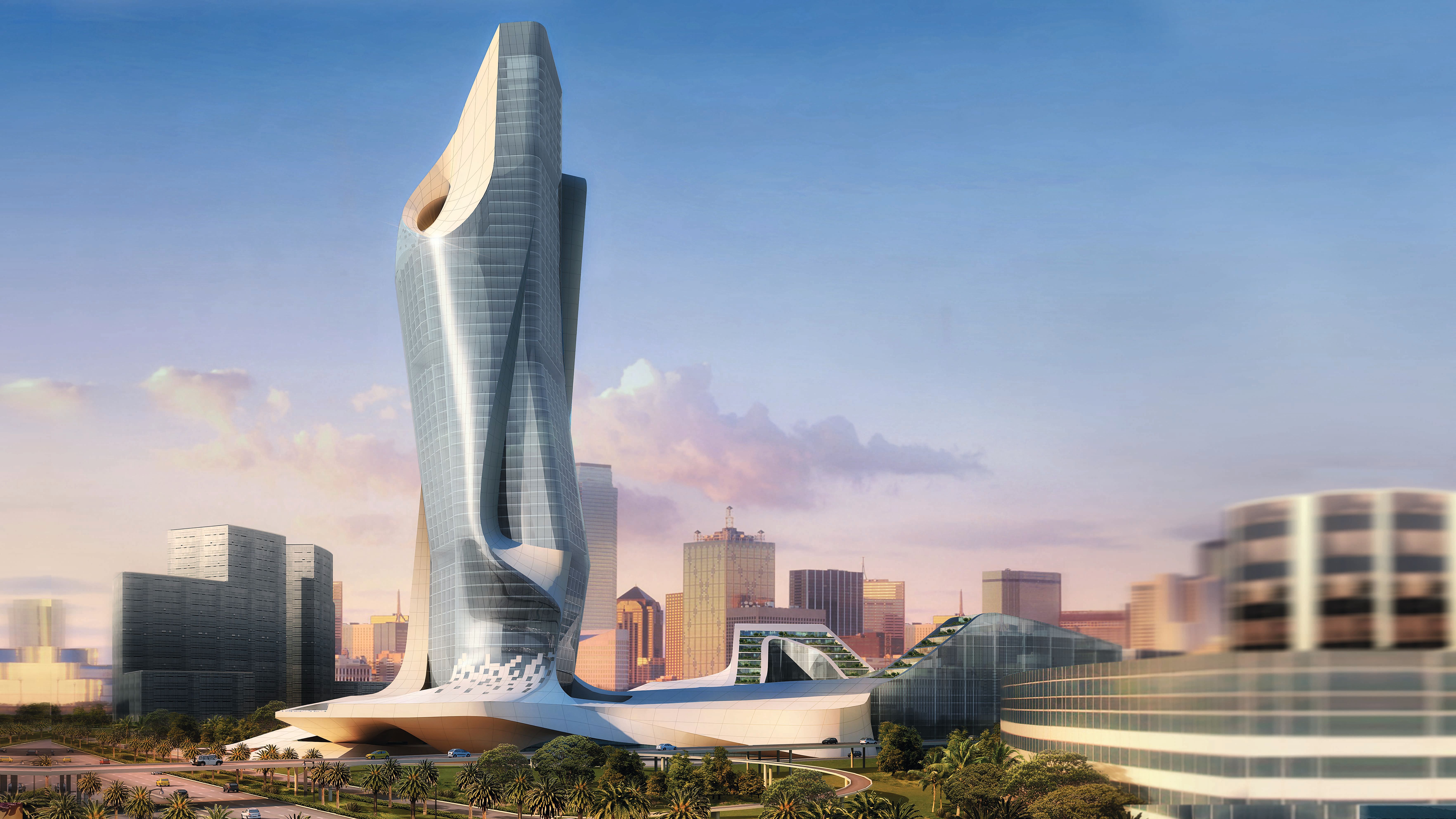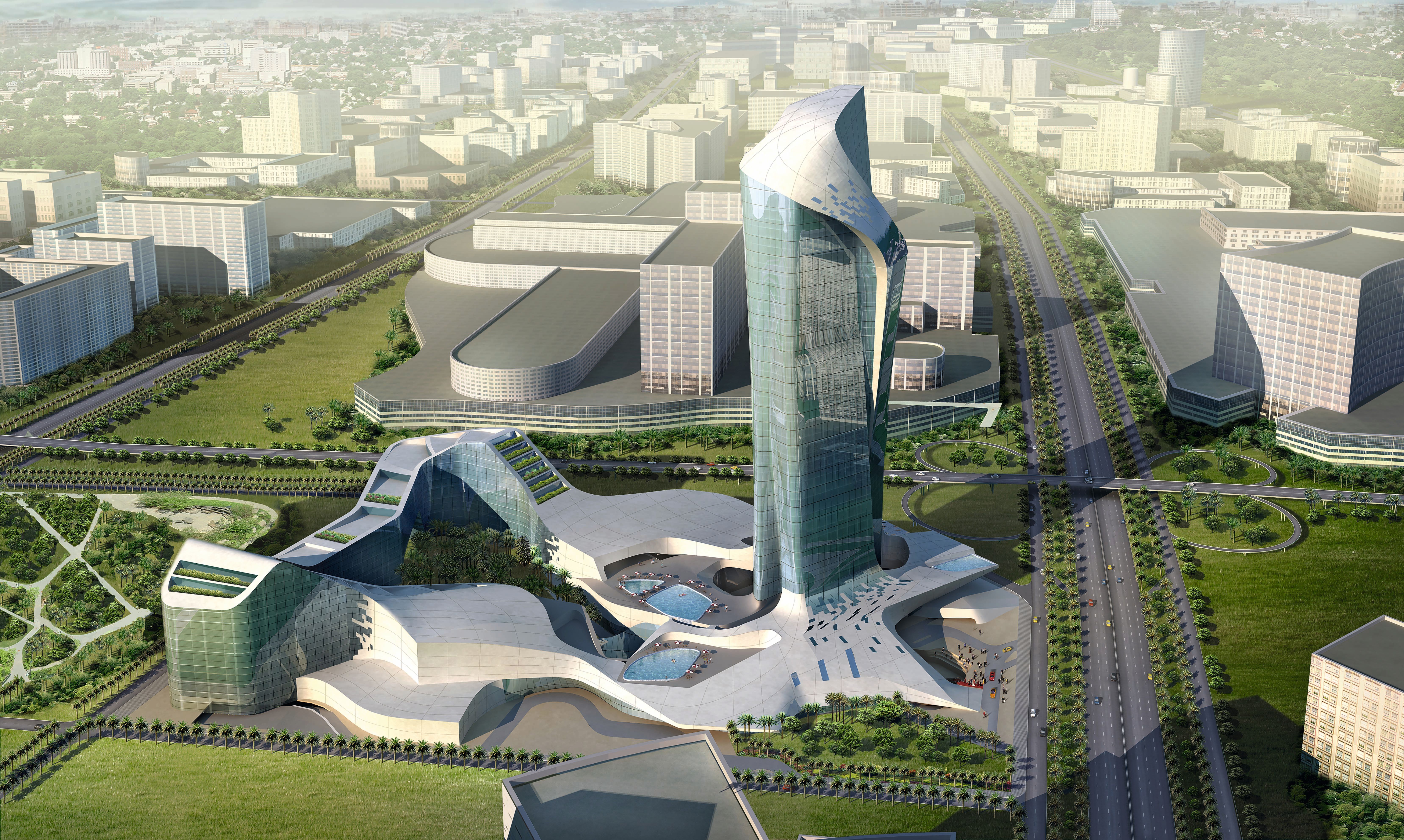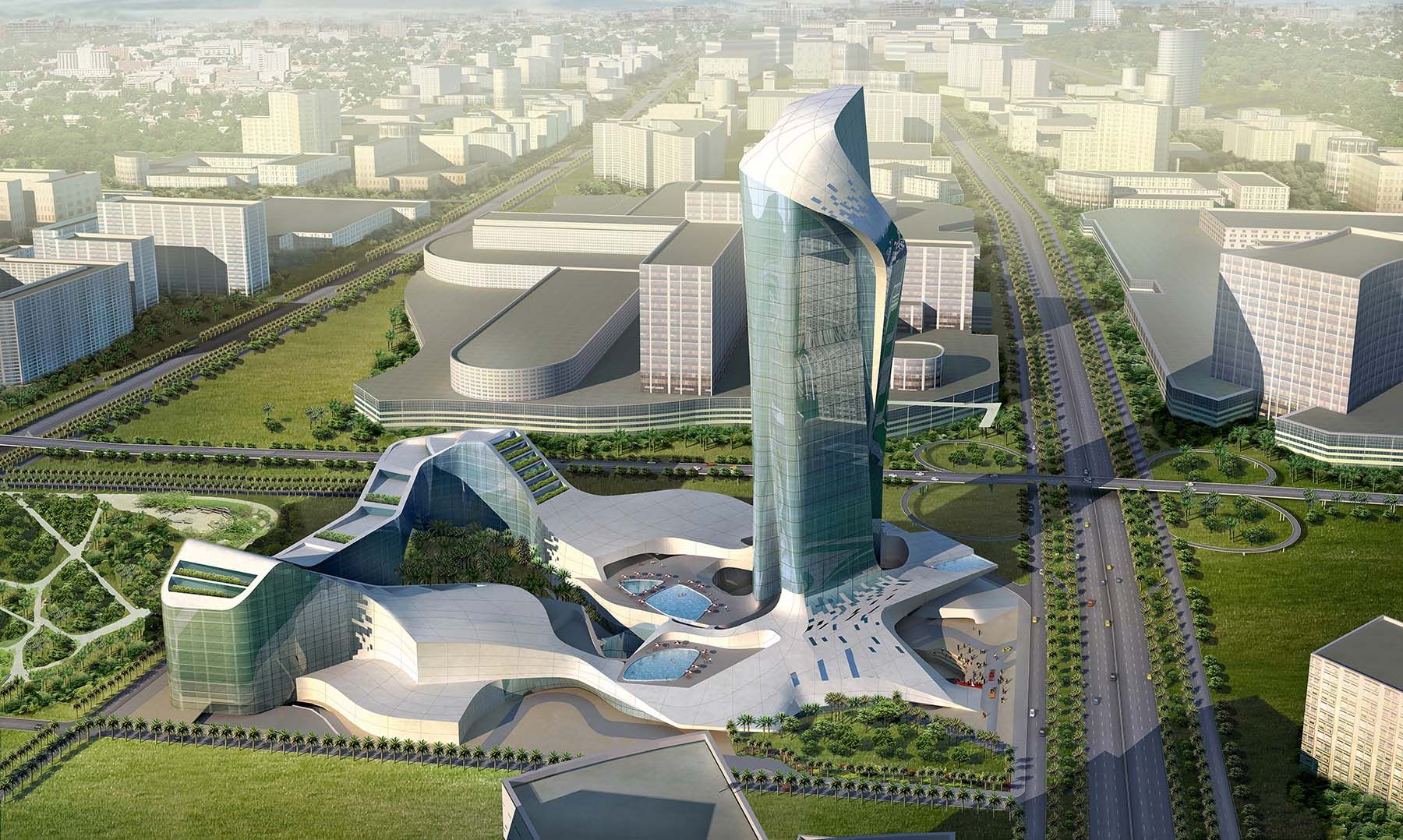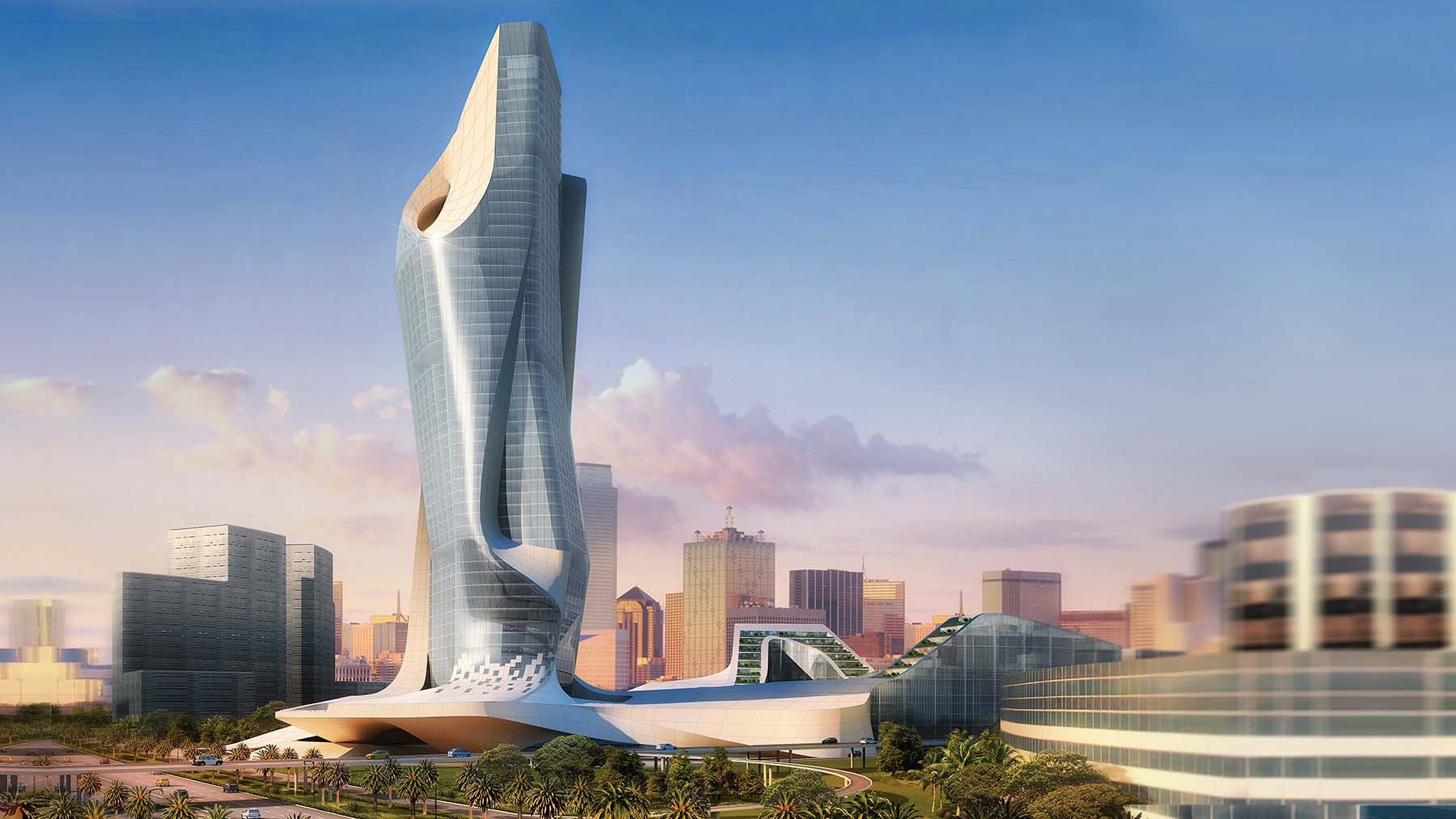

Conceived as a singular object, this project challenges the traditional city scale in a desert master development zoned for vehicles. While the density of program was a driving factor for this approach, it was primarily driven by the desire to create a large-scale interior world, detached from the surrounding developments.

As the potential new venue for the Dubai film festival, entertainment sits at the heart of the project. The lively mix of theater, cinemas, restaurants and bars have been organized into an urban canyon that brings people from the street, down into a shaded entertainment district, culminating in an enclosed oasis, completely removed from the context of surrounding developments. This canyon space is filled with opportunities to see and be seen and is configured to also function as a single huge venue with a meandering red carpet processional route.
To signify the development as you enter the city quarter, the sculptural hotel tower, reminiscent of an Oscar statue, was sited directly in view from the main highway. The design of the hotel tower aimed to create a sense of public destination at various levels when viewed from the ground. By inserting public program between the hotel rooms and the core, lobby spaces are creating at various heights, each designed with unique characteristics that correspond to different room types.

The tower culminates in a 60 meter truss that launches off the side of the tower into a suspended sky bar. The loop appears as a hole in the tower at the point at which you enter the building at ground level.

Alex Jackson, Alexandra Kubos-Nowak, Anja Frenkel, Annabel Cremer, Assaf Ruder, Carsten Dankert, Carsten Gauert, Constanze Stark, Gunnar Krempin, Julia Borchers, Justyna Mintus, Max Schwitalla, Michael Cornelsen, Nikolas Krause, Oliver André Claußen, Sebastian Nastke, Sebastian Scherer, Stefan Neudecker, Stefanie Götz, Steffen Ell, Stephen Molloy, Steven Beites, Sven Fuchs, Sylvain Rocher, Thorsten Moschüring, Tobias Krauth, Victoria Menor-Torres, Yuna Yagi